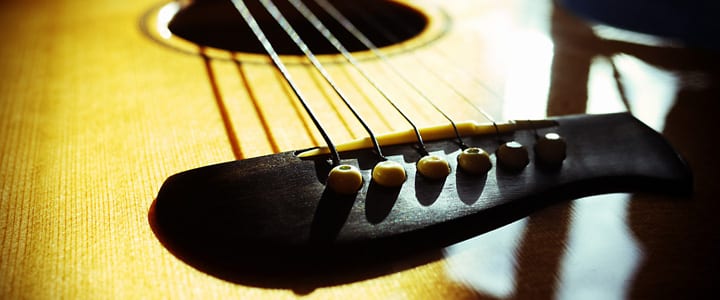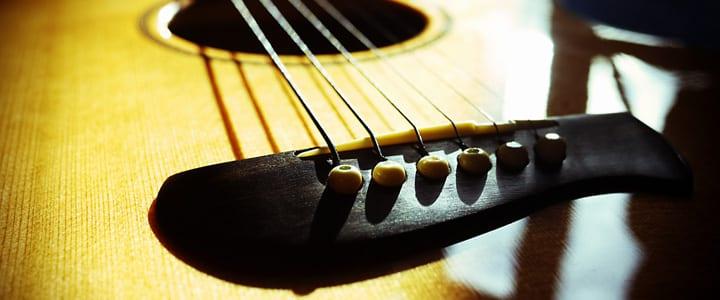 Whether your acoustic guitar is brand new or gently used, you can do a few simple things to keep it in great condition! Follow these tips from guitar teacher Samuel B. to get the most out of your acoustic guitar…
Whether your acoustic guitar is brand new or gently used, you can do a few simple things to keep it in great condition! Follow these tips from guitar teacher Samuel B. to get the most out of your acoustic guitar…
Let’s face it. Acoustic guitars can be an outright nuisance to keep in shape. They’re delicate, sensitive to both humidity and temperature patterns, and often have weak central support. While the desire to keep yours both easily accessible and on display in a stand or on a rack is more than understandable, doing so increases its vulnerability. A few simple storage and maintenance provisions will prolong its shelf life and reduce (if not altogether eliminate) the need for repairs.
1. Keep it in the case when you’re not playing.
Although I recommend a hard shell case, any padded one will do just fine. The trick here is to keep your instrument out of the open air while you’re not playing it. An unpadded soft shell case will not be much help here. Find a trustworthy robust alternative to protect your instrument.
2. Be sure your strings are the proper gauge.
Installing over-sized strings is a very easy way of creating otherwise avoidable bends in the neck. My experience has been that most acoustic guitars (at the least the ones I’ve played – Takamines and Martins) are light gauge friendly. Some of the more robust models (such as Guilds for example) rely on a heavier gauge of guitar string for optimal sound. It’s best to find out as much information as possible about a model’s gauge compatibility before purchasing it. If you have questions about the right gauge of string for your guitar, talk to your guitar teacher or chat with an expert at a local guitar shop.
3. Keep the truss rod tight.
The truss rod is the thin metal shaft aligned with (and within) the neck adjustable with an allen wrench. “Lefty loosey, righty tighty” is the relevant mnemonic device. Although I’ve heard opinions on both sides of the fence here with regard to whether it should be regularly tightened or regularly loosened, I’ve had the best results by checking it for tightness (for resistance to a clockwise turn in other words) in the middle of every string change. If you’re not sure your truss rod is at the right level of resistance, you can always have it looked at by a professional.
4. Change strings as infrequently as possible.
This may come as a surprise, but a college bandmate brought this to my attention at one point. While it’s true that professional musicians change strings after every performance, an instrument being used in a mostly non-performance capacity does not need this level of maintenance. As a matter of fact, changing strings too often is actually not good for an instrument that isn’t receiving regular full-length concert treatment.
Nightly string changes are perfectly appropriate for instruments like Willie Nelson’s “Trigger”, Bruce Springsteen’s “Excalibur”, and Neil Young’s “Old Black.” After all, these three are regular conduits of colossal energy and need to be equipped with the appropriate elements to support it. However, an instrument being used for lessons, wood-shedding, or songwriting does not need this attention and actually benefits structurally from having the same set of strings retained for as long as possible.

Samuel B. teaches beginner guitar lessons in Austin, TX. He teaches lessons face-to-face without sheet music, which is his adaptation of Japanese instruction (involving a call-and-response method). Learn more about Samuel here!
Photo by Brett Jordan
Suzy S.

